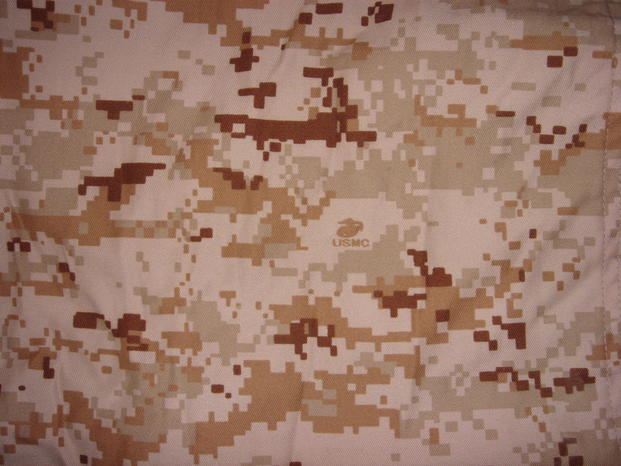The Marine Corps' patented MARPAT digital camouflage pattern does a great job of blending on the battlefield. But researchers are worried that the pattern won't be quite so stealthy against an enemy armed with optics that pick up parts of the light spectrum not visible to the naked eye. That's why officials with Marine Corps Systems Command are collaborating with the Army to study uniform dyes and materials that won't glow bright under special optics and give troops' positions away.
In August, the Army published a request for information for printed fabric materials, including MARPAT woodland and desert camouflage swatches that reduce the fabric's signature when it's seen through short-wave infrared, or SWIR, optics. Officials at the Army's Natick Soldier Research, Development & Engineering Center in Massachusetts hope the samples they obtain will determine the availability of existing technology and materials that will meet operational goals as they continue research.
Charles Bell, product manager for Infantry Combat Equipment at SYSCOM, said research involves the full spectrum, including signatures under black, or ultraviolet, light, which can make certain colors glow bright.
"We are looking at inks and mixes and dyes that [neutralize] the reflectance," he said in an interview with Military.com.
The difference in dyes would not be visible under ordinary light, Bell said.
The research is evidence of the military's move to plan for a future fight with a peer or near-peer enemy that will wield cutting-edge technology as a weapon--a shift from the wars U.S. troops have fought in Iraq and Afghanistan with a technologically inferior enemy.
"We see possibly a vulnerability in the future, that these optics are being developed, so we’re looking to the future," Bell said.
The spectral mitigation research is being undertaken as part of an ongoing collaborative effort between the Army and the Marine Corps to jointly develop and field equipment that both services can use on the battlefield.
“Anything we develop that the services are able to share has a ripple effect in terms of efficiency and cost. If the Army and Marine Corps can be sustained by the Defense Logistics Agency for the same systems—with the same National Stock Numbers—the result is an economy of scale that both services can leverage to reduce costs and simplify the acquisition and sustainment of multi-service common clothing and equipment,” Bell said in a statement.









